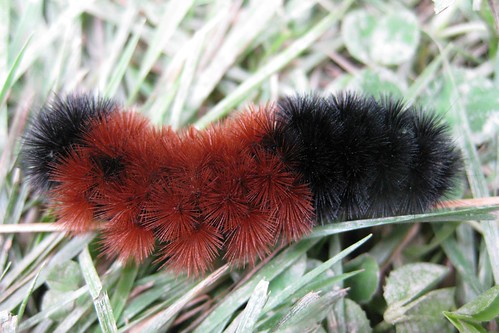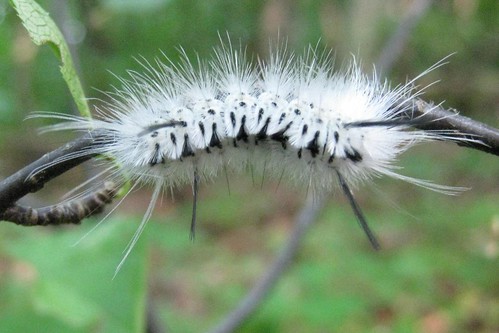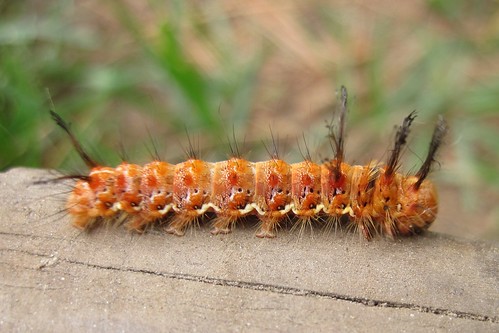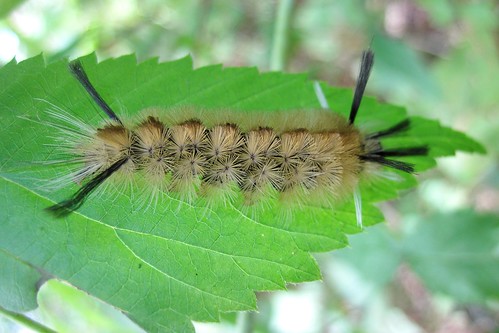
Its a sure sign that fall is around the corner when you see a Wooly Bear walking across the lawn. Wooly Bears, the larval name for the Isabella Tiger Moth, overwinter as caterpillars and pupate after emerging the next spring.

You can barely turn a corner around NBNC without bumping into a Hickory Tussock Moth caterpillar. They will stick together in groups when they first hatch in the mid-summer, but tend to separate as they grow, and by September can be fairly spread out. As winter comes, they will crawl into the leaf litter, spin a cocoon, and endure the cold months as a pupa.

These gentle giants start showing up in the fields of NBNC in late summer. The Gallium Sphinx Moth caterpillar feeds on bedstraw (aka Gallium). Caterpillars pupate and overwinter in loose cocoons in shallow underground burrows.

This caterpillar in the genus Panthea was found near the NBNC building this summer. Although we're not sure exactly what species it is, all in the genus feed exclusively on the needles of conifers and overwinter as pupae.

Many caterpillars, such as this Banded Tussock Moth, have tufts of hair protruding from various places. In fact, a "tussock" typically refers to a tuft of grass on a hummock, describing the hairy tufts. The Banded Tussock Moth incorporates many of its hairs into the cocoon where it overwinters.

No comments:
Post a Comment